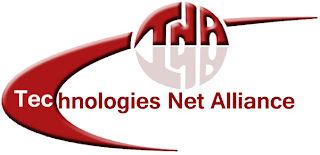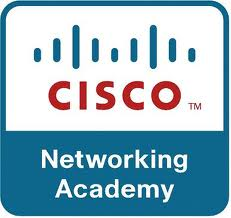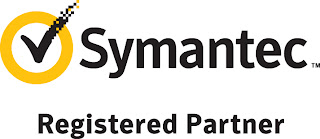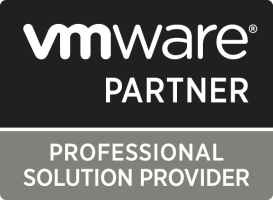The Ultimate IT Training Solution
 | ||||
Course Title: Data Center Virtualization using VMware vSphere 5.x
Proposed Duration: 5days 23rd jan to 27th jan 2013 (9 AM~05 PM)
Delivery Method: Instructor Led Class (Qualified VCP Instructor)
Overview:
This hands-on training explores installation, configuration, and management of VMware vSphere, which consists of VMware ESXi and VMware vCenter Server. You will develop and reinforce your skills in 24 hands-on labs, with lab time and lecture evenly split throughout the course. The course is based on ESXi 5.0 and vCenter Server 5.0
Target Audience:
System administrators, systems engineers, and operators responsible for ESXi, and/or vCenter Server
Objectives:
At the end of the training, you should gain an understanding of Manage user access to the VMware infrastructure the functionality in VMware vSphere 5 and be able to:
a. Install and configure ESXi
b. Install and configure vCenter Server
c. Configure and manage ESX networking and storage using vCenter Server
d. Deploy and manage virtual machines
e. Manage User Access using VMware Infrastructure
f. Increase scalability using vCenter Server
g. Monitor resource usage using vCenter Server
h. Apply patches using vCenter Update Manager
i. Manage higher availability and data protection using
j. Administering vSphere environment using iPad and VCMA
Prerequisites:
System administration experience on Microsoft Windows or Linux operating systems
Content:
1. VMware Virtualization
a. Virtualization, virtual machines, and vSphere components
b. Server, network, and storage virtualization concepts
c. Where vSphere fits into the cloud architecture
d. Install and use vSphere user interfaces
2. Virtual Machines
a. Virtual machines, virtual machine hardware, and virtual machine files
b. Deploy a single virtual machine and virtual machine appliance
3. VMware vCenter Server
a. vCenter Server and database requirements
b. vCenter Server architecture
c. Deploy a vCenter Server appliance
d. View and create vCenter Server inventory objects
4. Configure and Manage Virtual Networks
a. Create and manage a standard virtual switch
b. Modify standard virtual switch properties
c. Create and manage a Distributed virtual switch
d. Modify Distributed virtual switch properties
5. Configure and Manage vSphere Storage
a. Configure ESXi with iSCSI, NFS, and Fiber Channel storage
b. Create and manage vSphere datastores
c. Configure, deploy, and manage the VMware Virtual Storage Appliance
6. Virtual Machine Management
a. Deploy virtual machines using templates, cloning, and vCenter Converter
b. Modify and manage virtual machines
c. Create and manage virtual machine snapshots
d. Perform VMware vMotion® and Storage vMotion migrations
7. Access and Authentication Control
a. Control user access through roles and permissions
b. Configure and manage the ESXi firewall
c. Integrate ESXi with Active Directory
d. vShield Zones
8. Resource Management and Monitoring
a. Control virtual machine access to CPU, memory, and I/O resources
b. VMkernel methods for optimizing CPU and memory usage
c. Monitor resource usage using vCenter Server performance graphs and alarms
9. Data Protection
a. Strategies for backing up ESXi hosts
b. Backup/recovery APIs
c. Strategies for backing up virtual machines
10. High Availability and Fault Tolerance
a. Configure and manage a VMware High Availability (HA) cluster
b. Configure fault-tolerant virtual machines using VMware Fault Tolerance
11. Scalability
a. Configure and manage a VMware Distributed Resource Scheduler (DRS) cluster
b. Configure Enhanced vMotion Compatibility
c. Using VMware HA and DRS together
12. Patch Management
a. Manage ESXi patching and patch compliance using vCenter Update Manager
13. Installing VMware vSphere 5 Components
a. ESXi Installable installation
b. vCenter Server installation
c. Additional vCenter Server module installation
14. Administering vSphere Environments using iPad
- Features of the vSphere Client for iPad
- Requirements for the vSphere Client for iPad
- Installing vCenter Mobile Access (vCMA)
- Installing vSphere Client for iPad
e. Administering vSphere Using an iPad
Labs:
· Lab 1: Install VMware vSphere Graphical User Interfaces
• Install the vSphere Client
• Install the Web Client (Server)
· Lab 2: Configuring VMware ESXi
• Connect to an ESXi host with the VMware vSphere Client
• View host hardware configuration
• Configure DNS and routing information for an ESXi host
• Configure the ESXi host as an NTP client
· Lab 3: Working with Virtual Machines
• Create a virtual machine
• Install a guest operating system in a virtual machine
• Identify a virtual machine's disk format and usage statistics
• Install VMware Tools into a virtual machine installed with a Windows OS
• Enable time synchronization between a virtual machine and an ESXi host
• Copy programs from CD to your virtual machine
· Lab 4: Configure VMware vCenter Server Appliance
• Configure the vCenter Server appliance with a web browser
• Configure vCenter Server appliance to use directory services
• Register VMware vSphere Web Client with vCenter Server appliance
• Connect to the vCenter Server appliance with the vSphere Client
· Lab 5: Using VMware vCenter Server
• Create a vCenter Server inventory datacenter object
• Create vCenter Server inventory folder objects
• Add your ESXi host to the vCenter Server inventory
• Manage vSphere license keys
· Lab 6: Standard Virtual Switches
• View the current standard virtual switch configuration
• Create a standard virtual switch with a virtual machine port group
• Attach your virtual machine to the ProdVMs port group
· Lab 7: Accessing IP Storage
• Add a VMkernel port group to a standard virtual switch
• Configure the iSCSI software adapter
• Configure access to NFS datastores
• View iSCSI and NFS storage information
· Lab 8: Managing VMware vSphere VMFSL
• Review your shared storage configuration
• Change the name of a VMFS datastore
• Create a VMFS datastores
• Expand a VMFS datastore to consume unused space on a LUN
• Remove a VMFS datastore
• Extend a VMFS datastore
· Lab 9: Using Templates and Clones
• Create a template
• Copy Sysprep files to the vCenter Server appliance
• Create customization specifications
• Deploy a virtual machine from a template
• Clone a virtual machine that is powered on
· Lab 10: Modifying a Virtual Machine
• Increase the size of a VMDK file
• Adjust memory allocation on a virtual machine
• Rename a virtual machine in the vCenter Server inventory
• Add a raw LUN to a virtual machine and verify that the guest operating system can see it
• Expand a thin-provisioned virtual disk
· Lab 11: Migrating Virtual Machines
• Create a virtual switch and VMkernel port group for vMotion migration
• Verify that your ESXi host meets vMotion requirements
• Verify that your virtual machines meet vMotion requirements
• Perform a vMotion migration of a virtual machine
• Migrate virtual machine files with Storage vMotion
· Lab 12: Managing Virtual Machines
• Unregister a virtual machine in the vCenter Server inventory
• Register a virtual machine in the vCenter Server inventory
• Unregister and delete virtual machines from disk
• Take snapshots of a virtual machine
• Revert to a snapshot
• Delete an individual snapshot
• Using the Delete All function in Snapshot Manager
· Lab 13: Access Control
• Configure an ESXi host to use directory services
• Use Active Directory accounts to verify proper access to your ESXi host
• Create a custom role in vCenter Server appliance
• Assign permissions on vCenter Server inventory objects
• Verify permission usability
· Lab 14: Resource Pools
• Create CPU contention
• Create a resource pool named Fin-Test
• Create a resource pool named Fin-Prod
• Verify resource pool functionality
· Lab 15: Monitoring Virtual Machine Performance
• Use vCenter Server to monitor CPU utilization
• Undo changes made to your virtual machines
· Lab 16: Using Alarms
• Create a virtual machine alarm that monitors for a condition
• Create a virtual machine alarm that monitors for an event
• Trigger virtual machine alarms and acknowledge them
• Disable virtual machine alarms
· Lab 17: Using vSphere High Availability
• Create a cluster enabled for vSphere HA
• Add your ESXi host to a cluster
• Test vSphere HA functionality
• Prepare for the next lab
· Lab 18: vSphere Distributed Resource Scheduler
• Create a DRS cluster
• Verify proper DRS cluster functionality
• Create, test, and disable affinity rules
• Create, test, and disable anti-affinity rules
• Create, test, and disable virtual machine to host affinity rules
· Lab 19: VMware vCenter Update Manager
• Install Update Manager
• Install the Update Manager plug-in in the vSphere Client
• Modify cluster settings
• Configure Update Manager
• Create a patch baseline
• Attach a baseline and scan for updates
• Stage patches onto ESXi hosts
• Remediate ESXi hosts
· Lab 20: Installing VMware vCenter Server
• Access your vCenter Server system
• Configure a SQL Server ODBC connection to a remote database
• Install vCenter Server
· Lab 21: Installing VMware Data Recovery (Bonus Lab)
• Installing VMware Data Recovery Appliance
• Configuration of vDR, De-Duplicated Storage
• Creating Backup jobs and Recovery Procedures
· Lab 22: Administering vSphere Environment using iPad (Bonus Lab)
• Installing vCenter Mobile Access (vCMA)
• Installing vSphere Client for iPad
• Administering vSphere Using an iPad
· Lab 23: Creating a Free iSCSI SAN with OpenFiler / Starwind (Bonus Lab)
• Downloading OpenFiler/Starwind
• Installing OpenFiler/Starwind
• Configuring OpenFiler/Starwind as an iSCSI SAN
• Connecting vSphere to the OpenFiler/Starwind iSCSI SAN
· Lab 24: vSphere Auto Deploy (Bonus Lab)
• Installing Auto Deploy and TFTP Server
• Adding ESXi Host to vCenter
• Moving Host Profile from Staging to Production Area
• Installing Dump and Syslog Collectors
• Setting Dump Collector
• Setting Up Syslog Server
• Test and Repair Rules Compliance
• Auto Deploy PowerCLI Commands












No comments:
Post a Comment